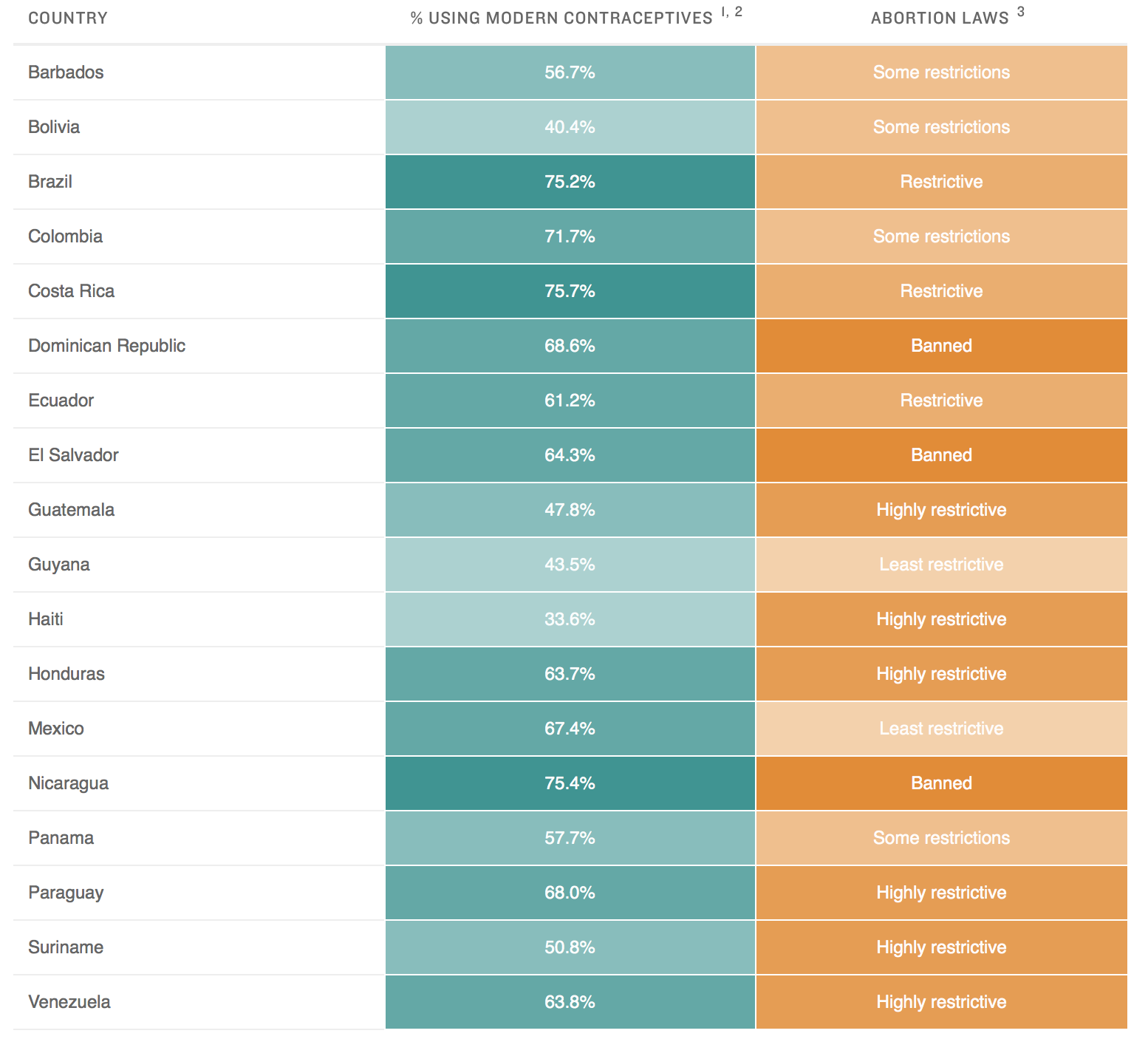Don't get pregnant.
That's the advice given to women by the governments of Brazil, Colombia, Ecuador and El Salvador in light of a possible link between the Zika virus, which is spreading in those countries, and a birth defect called microcephaly, which results in an abnormally small head and possible brain damage. Brazil has reported thousands of cases of microcephaly since the outbreak began there last spring; researchers are trying to determine whether the virus is the cause.
One thing is certain: The outbreak has sparked a public debate about issues of contraception and abortion.
More than half of pregnancies in Latin America are not planned. In this heavily Roman Catholic part of the world, women don't always have access to modern methods of contraception, and abortion may be restricted (see chart).
Use Of Contraceptives And Abortion Laws In Countries Affected By Zika

1. Contraception prevalance rate: Estimated share of women 15 to 49 years old in marriages or unions who are using (or whose partners are using) some form of contraceptive. Figures are as of 2015.
2. “Modern” contraceptive methods include birth control pills, intrauterine devices, condoms and sterilization.
3. Abortion laws (as of 2013):
— Banned: Not allowed under any circumstance
— Highly restrictive: Permitted only to save a woman’s life
— Restrictive: Permitted only to save a woman’s life, in cases of rape or incest, and/or to preserve a woman’s mental or physical health
— Some restrictions: Permitted only for one of the following reasons: economic, social, fetal impairment, rape, incest, woman’s mental or physical health, or to save a woman’s life
— Least restrictive: Legal (typically up to a certain gestational age such as 20 weeks)
Source: Kaiser Family Foundation; Pan American Health Organization; United Nations Population Division: Estimates and Projections of Family Planning Indicators 2015; United Nations Population Division: World Abortion Policies 2013 (Alyson Hurt/NPR)
But even if abortion is a legal option in a Zika-affected country, it's not always possible for a pregnant woman to know whether the fetus is affected. According to the Centers for Disease Control and Prevention, microcephaly "might be detected as early as 18 to 20 weeks" into a pregnancy by ultrasound but "can be challenging" to detect.
9(MDAxOTAwOTE4MDEyMTkxMDAzNjczZDljZA004))